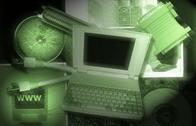Advertisement
Going green and stamping out fraud

The quality control and fraud detection arena is excited about the “going green” concept for the mortgage industry because it is leading the way for a decrease in mortgage fraud, such as identity theft and forgery. The problem with going paperless is the fact that so many documents require signatures known as “wet ink.” There are two types of signatures other than wet ink: Electronic signatures and digital signatures.
An electronic signature is merely signing a digital pad or screen that captures an electronic signature, trying to replicate a wet ink signature and place it on a document. We have all done this at the store when we make purchases with bank cards and credit cards. The advantage is that it is convenient and easy to use. The disadvantage is that the signature pad has a low pixel ratio and does not provide a smooth read/write as wet ink, the electronic signature can be stored in a database and can be captured or stolen, the electronic signature rarely matches a wet signature, and a person’s identity is rarely validated prior to signing and signatures are not compared.
Because of the primitive technology of the electronic signature, it is difficult for the forensic auditor when looking for forgery or identity theft. Electronic signatures, however, will be short-lived, because of other technologies on the horizon that are more secure and less prone to identity theft.
A digital signature is different from an electronic signature because there is no signature. A digital signature is issued from a secure platform involving other technologies that produces an individual number for a person that represents that person’s legal signature and identity. Think of it like a social security number, account number or a bar code that identifies you. The digital signature is more secure than an electronic signature because the identity is already validated and verified through the vetting process of issuing the security certificate for the digital signature. Also, to use a digital signature requires other passageways, including log in accounts to networks and software, in order to sign a document digitally, thus adding more layers of security and identity verifications. The digital signature is usually installed on an electronic tape on a card like a hotel key or credit card. When the digital signature is used, it usually requires a PIN (personal identification number) in order for it to activate as a legal signature, yet another layer of security that electronic signatures do not require. Therefore, every page of a document leaves a digital thumbprint as documents are accessed. This is a fraud investigator’s dream.
The disadvantages are many because of the host of technology support and technology staff to make it work. Digital signatures requires the production of card keys and the hardware to burn the binary code to the electronic tape. If you lose the card, you cannot sign digitally until a new card is issued. The advantages are that it is the most secure identity protection available. A thief will have to utilize a host of technologies and electronic intrusion hardware and systems in order to commit fraud using a digital signature.
I know of one incident of fraud that involved a digital signature.
Someone with similar access was able to access documents already digitally signed via a network and software access. The individual copied and pasted a different digital signature and placed it on other documents. This means that the digital signature can be lifted, however, the date could not be changed. If a document required dual digital signatures, the dates would have to match or be within tolerance for the execution of the document. Also, the documents left a digital thumbprint and were traced back to the theft. Even though, the digital signature was lifted, the electronic trail was made.
The future of signatures could possibly come in the form of fingerprints or retina scans. In Iraq, pictures of one’s ears and digital voice capturing were used as a means of identity verification for verifying individuals. Technology will make the wet signature obsolete at this point, the demand for signatures other than wet signature will only come as demand is made and as technology becomes less expensive and more available.
Tommy A. Duncan, CMT is executive vice president of Quality Mortgage Services LLC. He may be reached by phone at (615) 591-2528, ext. 124.
About the author





